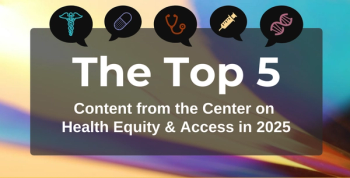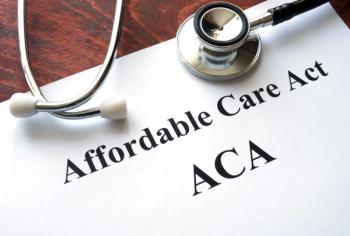
Higher Employer-Sponsored Healthcare Premiums Occur in Companies With a Predominantly Female Workforce
Higher employer-sponsored healthcare premiums were found to occur in companies where women account for 75% or more, as opposed to 25%, of the workforce, according to a statistical brief.
Higher employer-sponsored healthcare premiums were found to occur in companies where women account for 75% or more, as opposed to 25%, of the workforce, according to a
The statistical brief reported estimates of private sector employer-sponsored health insurance (ESI) premiums (single, employee-plus-one, family), employee contributions by firm size, and the percentage of an establishment’s workforce who are women. As women aged 19 to 64 have higher medical expenditures than men of the same age, the researchers sought to investigate whether private sector ESI premiums mirror these prices:
- Estimates obtained using private sector data from the 2018 Medical Expenditure Panel Survey-Insurance Component (MEPS-IC)
- All estimates provided are significantly different at the 0.05 level unless noted by the authors
The results showed that in companies where women accounted for 75% or more of the workforce, ESI premiums averaged $7233 for single coverage, as opposed to $6400 in companies where women account for 25% of the workforce. These statistics were based off companies who had 50 or more employees, and were similar to the overall average single premiums (75% or more of women overall: $7170; 25% or less of women overall: $6432).
In analyses on ESI average premiums for employee-plus-one and family health plans, both exhibited higher overall average premiums in establishments with 75% or more of women in the workforce, compared to 25% or less (employer-plus-one: $13,942 vs $13,050; family: $20,593 vs $18,875). When accounting for companies with 50 or more employees, disparities in ESI premiums for workforces with 75% of women, compared to 25%, increased (employer-plus-one: $14,079 vs $13,115; family: $20,908 vs $19,134).
There were no statistically significant differences found in average ESI single employee contributions by percentage of women in the workforce overall, or by firm size. For ESI average employee contributions to employee-plus-one health plans, averages were found least in establishments with 25% to 49% of women in the workforce in both overall companies ($3371), and those with 50 employees or more ($3325). In ESI average employee contributions to family health plans, averages were highest in workforces with 75% or more of women in both overall companies ($5963), and those with 50 employees or more ($5960).
Reference
Premiums and employee contributions to employer-sponsored health insurance by workforce gender and firm size, private industry, 2018. Statistical Brief #525. Agency for Healthcare Research and Quality website. https://meps.ahrq.gov/data_files/publications/st525/stat525.shtml? Published September 2019. Accessed October 17, 2019.
Newsletter
Stay ahead of policy, cost, and value—subscribe to AJMC for expert insights at the intersection of clinical care and health economics.








































